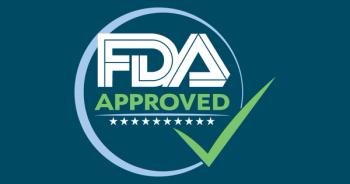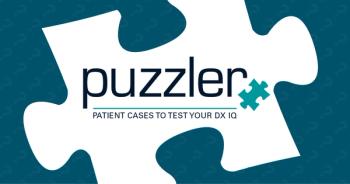
Full case: Don’t turn a blind eye to an oozy ear
Can you diagnose this 10-year-old with an oozy ear?
The Case
A previously-healthy and fully-immunized 10-year-old male presented to an outside Emergency Department for evaluation of one week of left ear pain with itching, drainage, and associated postauricular swelling. The parent reported that the symptoms began after frequent swimming while on vacation and were not relieved by over-the-counter swimmer's ear drops. There was no history of recent trauma or insect bites. He had no prior history of recurrent ear infections, abscesses, or boils. On the day of presentation, the patient reported a mild headache and neck pain, but denied any associated fevers, upper respiratory, or gastrointestinal symptoms. The patient had no significant past medical or surgical history and had no known allergies.
Physical exam
Upon arrival to the Emergency Department, the patient was non-toxic appearing and in no acute distress with normal vital signs for age (heart rate 97, blood pressure 108/55, T 37.7C, RR 20, and SpO2 100% on room air). Physical examination was notable for proptosis of the left ear and a considerable amount of purulent drainage obstructing visualization of the left tympanic membrane. There was also fluctuant swelling and associated tenderness of the left mastoid without overlying erythema, induration, or warmth (Figure 1).
Labs and imaging
The patient had bloodwork completed, which was significant for leukocytosis to 15.5 (ref range: 4.5–13.5 103/μL) with a left shift and elevated c-reactive protein (CRP) to 32.8 (ref range: 0.0 - 8.2 mg/L). Complete blood count (CBC) also demonstrated a normocytic anemia with Hgb 9.3 (ref range: 11.5 – 15.5 g/dL) and comprehensive metabolic panel (CMP) was notable for mild hypoalbuminemia of 2.6 (ref range: 3.2 – 4.7 g/dL), but labs were otherwise unremarkable. He was started on empiric IV Ampicillin-Sulbactam (Unasyn). While awaiting transfer to a pediatric facility, the patient underwent a CT temporal bone with/without contrast, which was significant for…
Final diagnosis
“Coalescent mastoiditis with resultant extracranial abscess and dural venous sinus thrombosis” (Figure 2).
Differential diagnosis
Given the classic clinical features of postauricular erythema, tenderness, and swelling with associated proptosis and loss of postauricular sulcus definition, the patient was treated empirically for presumed acute mastoiditis until confirmation of the diagnosis was made by CT imaging. However, it is important to consider additional diagnoses that can often mimic acute mastoiditis or have clinically-significant complications if not ruled out early on. Retro-auricular cellulitis can also present with postauricular erythema, tenderness, and swelling with associated proptosis, as well as ear canal discharge; however, it is usually preceded by focal trauma to the ear such as a bug bite or an animal scratch and notably has the textbook “otitis externa” pain with palpation and manipulation of the ear canal, tragus, and pinna.
Postauricular lymphadenopathy can also present with a swelling behind the ear, but lymphadenopathy swelling is more consistent with a discrete, mobile yet tender lump than a generalized area of swelling over the mastoid process. It is important to differentiate the two and take a thorough history, for while postauricular lymphadenopathy can be self-limiting, it can also be associated with diseases like rubella and cat-scratch disease, or even an oncologic process. Perichondritis is differentiated by the location of the swelling localized to the pinna rather than behind it; prompt recognition and antibiotic management is important as the condition can be complicated by focal cartilage necrosis and subsequent permanent deformities of the ear.
Other conditions that require rapid detection are Lemierre’s Syndrome and deep neck infections, as they can quickly progress to bacteremia, lung abscesses, pericarditis, mediastinitis, and septic shock. Both conditions usually present with neck swelling as opposed to post-auricular swelling, but both conditions can also originate from acute mastoiditis. It is also important to consider etiologies of post-auricular swelling arising from the bone itself. Aneurysmal bone cysts (ABCs) are incredibly rare, comprising only 1-6% of primary tumors, and ABCs involving the skull only make up 3-6% of all ABCs, making it an unlikely cause of painful post-auricular swelling with associated headaches and hearing changes.
However, obtaining imaging studies will clearly differentiate an ABC from acute mastoiditis, demonstrating a multiloculated lesion with characteristic fluid-fluid levels on CT consistent with the internal septations of the cystic bone lesion. While a basilar skull fracture can present with postauricular swelling and ear discharge, the swelling has overlying ecchymosis (“Battle Sign”) and the ear discharge is a clear watery fluid – leaking CSF – as opposed to the thick purulent discharge seen with acute mastoiditis. (Table)
Management
The patient was successfully transferred to a Pediatric Emergency Department for pediatric otolaryngology (ENT) and neurosurgery consultation. After obtaining blood cultures, the patient’s antibiotics were broadened to include vancomycin and cefepime. Additional imaging studies were obtained, an MRI brain with/without contrast and MRV brain without contrast, which both demonstrated mastoiditis with associated dural sinus occlusive disease involving the left distal transverse and sigmoid dural venous sinuses, in addition to the proximal left internal jugular vein (Figure 3).
The patient was taken to the operating room with ENT for mastoidectomy with incision and drainage of post-auricular abscess, myringotomy with tympanostomy tube placement, and decompression of the sigmoid sinus. The patient was admittedly post-operatively for anticoagulation on Lovenox with the pediatric hematology-oncology team following; anti-Xa Heparin monitoring revealed adequate levels throughout admission. Per recommendations from the Pediatric Infectious Disease team, the patient was transitioned to monotherapy with Unasyn for adequate coverage of streptococcus and anaerobic bacteria in the setting of a known jugular thrombus. CRP was monitored and showed appropriate trending down after 13 days of IV antibiotic therapy from 32.8 to 9.7 to 0.8 (ref range: 0.0 - 8.2 mg/L). The patient was admitted for a total of 4 weeks of IV antibiotics via PICC line.
The incision healed appropriately, and pain was adequately managed with oral Tylenol and Ibuprofen as needed. On admission day 18, there was a small area of post-auricular fluctuance noted on physical examination. There was no associated pain or drainage, and the incision site was not involved. ENT was consulted to evaluate at bedside, where scant serous fluid was able to be expressed from the site; there was no purulence or concerns for infection. The patient remained afebrile and hemodynamically appropriate throughout admission without any further concerns on physical examination.
The patient was noted to have a normocytic anemia and mild hypoalbuminemia, both of which were attributed to his acute illness, and labs demonstrated gradual improvement of both Hgb from 9.3 to 10 (ref range: 11.5 – 15.5 g/dL) and albumin from 2.6 to 3.1 (ref range: 3.2 – 4.7 g/dL) over the course of his admission. Outpatient monitoring for normalization of his hemoglobin/hematocrit levels was completed by the Pediatric Hematology-Oncology team
Patient outcome
The patient did not experience any post-operative complications and repeat imaging after completion of his antibiotic and anticoagulation treatment courses did not reveal any residual dural sinus thrombosis.
Discussion
Acute mastoiditis (AM) is a bacterial infection of the mastoid bone, that results as a sequela of acute otitis media, when edema or granulation tissue obstructs the drainage of purulent fluid from the mastoid air cells.1 The pediatric population is at increased risk of mastoid involvement in ear infections due to increased pneumatization of the mastoid bone trabeculae in comparison to an adult1. In a child, especially those under the age of two years, AM will commonly present with ear pulling, fever, and irritability, while older patients will complain of otalgia with otorrhea and headache.2 General inspection is often notable for protrusion of auricle, and further examination will show postauricular fluctuance. Acute mastoiditis is a rare, but well-documented complication of acute otitis media that can be further associated with severe, and potentially life-threatening clinical outcomes.
Complications of acute mastoiditis may be extracranial or intracranial. The most common complication is subperiosteal abscess; other extracranial sequelae include facial nerve palsy, internal jugular vein thrombosis, and periphlebitis of the sigmoid or lateral sinuses. Intracranial complications such as epidural abscess, meningitis, encephalitis, and thrombosis of the sigmoid sinus are not common, but can quickly become lethal, and may present with neurological signs in addition to traditional AM symptoms.1
In the case of cerebral sinus venous thrombosis (CSVT), otitis media and acute mastoiditis are the leading risk factors due to the contiguous nature of the middle ear structures with the sigmoid and transverse sinuses. The infection may propagate via small venules that drain from the mastoid cavity into the sigmoid sinus, thus allowing for direct spread.3 The resulting inflammatory process facilitates clot formation, leading to partial or complete occlusion of the dural venous sinuses and cerebral veins.
This impediment of blood flow causes increased venous pressure and subsequently increased intracranial pressure. There have been cases in which this increased venous pressure decreases cerebral blood flow and perfusion, leading to tissue ischemia and infarction4. While head and neck infections such as acute mastoiditis are the most common risk factor for CVST (46% to 47% of cases), most patients have more than one predisposing condition.4 Other risk factors include inherited coagulopathies, malignancy, SLE, nephrotic syndrome, and trauma.
Independent of predisposing factor, the incidence of cerebral venous sinus thrombosis is approximately 0.67 per 100,000 children annually,5 with a reported incidence of 2.7% of sinus thrombosis in association with mastoiditis and otitis media in a review of the literature6. In the pre-antibiotic era, acute mastoiditis complicated by CVST was considered to have 100% mortality, but with new technological advances in neuroimaging and the ability for early diagnosis/treatment with anticoagulation and antibiotics, mortality rates have dropped to as low as 3%.3 With regards to morbidity, studies have shown “good outcomes” in approximately 74% of pediatric patients, with better cognitive outcomes seen in patients with sigmoid or lateral sinus involvement.4
Early diagnosis is essential for a good prognosis. To quickly identify complications of acute mastoiditis, diagnostic imaging with CT and MR remains the gold standard of care, as studies have revealed that the lack of neurological deficits does not preclude intracranial complications.7 In reviewing the literature on sinus thrombosis secondary to mastoiditis in the pediatric population, only half of the patients presented with one or more neurological findings. It was imaging studies–CT, MRI, and MRV–that provided the diagnosis.8 After diagnosis of mastoiditis, antibiotics are the mainstay treatment, alone or in combination with surgery. In the setting of associated thrombosis, anticoagulation with or without surgical intervention is also indicated.
Comparing the 2021-2024 cohort with 2001-2008 cohort, we observed an increase in the number of cases (74 cases/year vs 27 cases/year), a rise in rate of intracranial complications (39% vs 4%; P < .001), an increase in performance of mastoidectomy (54% vs 33%; P < .001), and a shift in etiologic agents, with an increase in the proportion of Streptococcus pyogenes (P < .001) and Fusobacterium necrophorum (P = .02) and concomitant decline in Streptococcus pneumoniae (P < .001).
Why should a pediatric physician be aware of this?
Acute mastoiditis is a rare but crucial differential diagnosis to consider in the setting of ear pain, especially in the pediatric population. However, a recent large, single-center study observed an increase in the number of cases of acute mastoiditis from 27 cases/year to 74 cases/year with a statistically significant rise in the rate of intracranial complications (39% vs 4%; P < .001).9 “The incidence of acute mastoiditis remains highest in children 2 to 3 years of age” and due to the often-limited communication skills in this age group, “the most significant risk factor for potential complications is a delay in diagnosis and treatment of mastoiditis.”10 Acute mastoiditis is a clinical diagnosis and a thorough physical examination is essential, but imaging studies are also important for the early recognition of serious, and potentially life-threatening, complications such as dural sinus thrombosis.
References
- Cassano P, Ciprandi G, Passali D. Acute mastoiditis in children. Acta Bio Medica : Atenei Parmensis. 2020;91(Suppl 1):54-59. doi:https://doi.org/10.23750/abm.v91i1-S.9259
- Sahi D, Callender KD. Mastoiditis. Nih.gov. August 8, 2023. Accessed August 1, 2025. https://www.ncbi.nlm.nih.gov/books/NBK560877/?report=classic
- Kethireddy N, Sama S. Cerebral Sinus Venous Thrombosis in the Setting of Acute Mastoiditis. Cureus. Published online February 6, 2019. doi:https://doi.org/10.7759/cureus.4023
- Salloum S, Belzer K. Cerebral sinovenous thrombosis as a complication of otitis media. Clinical Case Reports. 2018;7(1):186-188. doi:https://doi.org/10.1002/ccr3.1948
- Nektaria Kalyva, Mousafeiris VK, Giannakopoulos A. Sigmoid Sinus Thrombosis As Complication of Otitis Media in a 3-Year-Old Boy: Case Report and Review of the Literature. Cureus. Published online February 15, 2022. doi:https://doi.org/10.7759/cureus.22262
- Massimo Luca Castellazzi, Maria, Gaffuri M, et al. Pediatric otogenic cerebral venous sinus thrombosis: a case report and a literature review. The Italian Journal of Pediatrics/Italian journal of pediatrics. 2020;46(1). doi:https://doi.org/10.1186/s13052-020-00882-9
- Fiordelisi A, Soldovieri S, Trinci M, et al. Clinical characteristics and predictive factors of thrombotic complications in children with acute mastoiditis: a single center retrospective study. European journal of pediatrics. 2025;184(2):142. doi:https://doi.org/10.1007/s00431-024-05965-x
- Elisabetta Zanoletti, Cazzador D, Chiara Faccioli, Sari M, Bovo R, Martini A. Intracranial venous sinus thrombosis as a complication of otitis media in children: Critical review of diagnosis and management. International Journal of Pediatric Otorhinolaryngology. 2015;79(12):2398-2403. doi:https://doi.org/10.1016/j.ijporl.2015.10.059
- Chebib E, Ok V, Cohen JF, et al. Changes in Clinical and Microbiological Characteristics of Acute Mastoiditis in Children: A Comparative Study Between 2001-2008 and 2021-2024. The Journal of Pediatrics. 2025;285:114672. doi:https://doi.org/10.1016/j.jpeds.2025.114672
- Carter L, Callon W. Mastoiditis. Pediatrics in Review. 2024;45(9):540-542. doi:https://doi.org/10.1542/pir.2023-006249
Newsletter
Access practical, evidence-based guidance to support better care for our youngest patients. Join our email list for the latest clinical updates.










